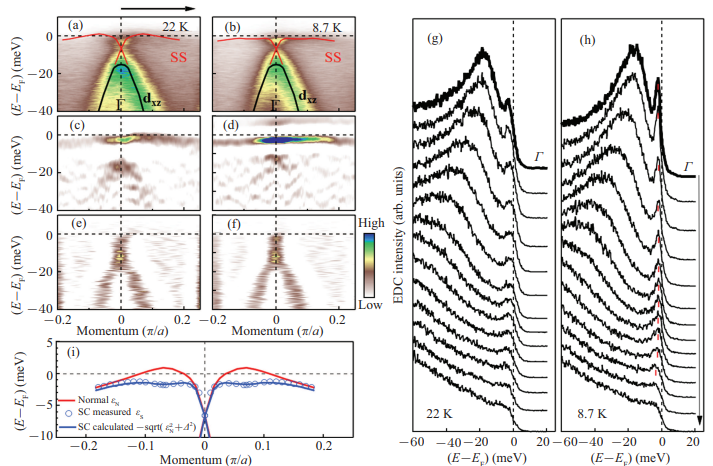|
|
Absence of BCS-BEC crossover in FeSe0.45Te0.55 superconductor
Hot! 
Junjie Jia(贾俊杰), Yadong Gu(谷亚东), Chaohui Yin(殷超辉), Yingjie Shu(束英杰), Yiwen Chen(陈逸雯), Jumin Shi(史聚民), Xing Zhang(张杏), Hao Chen(陈浩), Taimin Miao(苗泰民), Xiaolin Ren(任晓琳), Bo Liang(梁波), Wenpei Zhu(朱文培), Neng Cai(蔡能), Fengfeng Zhang(张丰丰), Shenjin Zhang(张申金), Feng Yang(杨峰), Zhimin Wang(王志敏), Qinjun Peng(彭钦军), Zuyan Xu(许祖彦), Hanqing Mao(毛寒青), Guodong Liu(刘国东), Zhian Ren(任治安), Lin Zhao(赵林), and Xing-Jiang Zhou(周兴江)
Chin. Phys. B, 2024, 33 (7):
077404.
DOI: 10.1088/1674-1056/ad51f9
In iron-based superconductor Fe(Se,Te), a flat band-like feature near the Fermi level was observed around the Brillouin zone center in the superconducting state. It is under debate whether this is the evidence on the presence of the BCS-BEC [Bardeen-Cooper-Schrieffer (BCS), Bose-Einstein condensation (BEC)] crossover in the superconductor. High-resolution laser-based angle-resolved photoemission measurements are carried out on high quality single crystals of FeSe$_{0.45}$Te$_{0.55}$ superconductor to address the issue. By employing different polarization geometries, we have resolved and isolated the d$_{yz}$ band and the topological surface band, making it possible to study their superconducting behaviors separately. The d$_{yz}$ band alone does not form a flat band-like feature in the superconducting state and the measured dispersion can be well described by the BCS picture. We find that the flat band-like feature is formed from the combination of the d$_{yz}$ band and the topological surface state band in the superconducting state. These results reveal the origin of the flat band-like feature and rule out the presence of BCS-BEC crossover in Fe(Se,Te) superconductor.

|